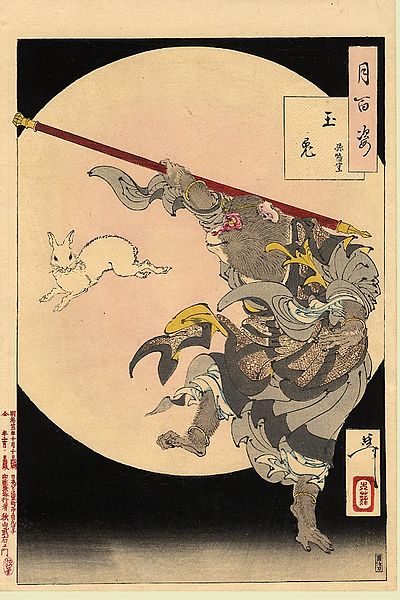The Tiger and the Frog This story tells the tale of a hungry tiger who one day comes across a small frog. The Tiger's first instinct is to gobble the frog up, but the frog declares that he is king of all frogs, saying that he can jump any distance and do anything. This little frog is even brave enough to challenge this Tiger to who can jump across a nearby river! The frog bites onto the tigers tail and uses him to jump across the river. When they get to the other side, the frog tricks the tiger by spitting up his own fur and claiming he had eaten a tiger the day before. Scared, the tiger runs away.
How the Fox Fell a Victim to His Own Deceit In this tale, a mother tiger brings a baby fox to her cave to be a playmate for her own cub. One day, this mother tiger finds a baby calf while out on her hunt, and brings it back to be a playmate for her cub as well. However, when the calf arrives, the fox becomes jealous and plots against the calf. When the mother tiger dies, the fox tells both the calf and the tiger that the other is planning on killing them. The calf and the tiger figure out that the fox has tricked them, and instead kill the fox!
The Man and the Ghost In this story, a man meets a ghost one day while crossing a river, and tells the ghost that he himself is also a ghost. The two travel together for a while, until the ghost goes into town and steals the soul of the king's son while the man is asleep. The ghost gives the man the soul in a bag, telling him to hold onto it while he attends other business. The man, however, returns the soul to the king's son and receives a vast reward.
The Story of the Three Hunters This story tells the tale of three married brothers who all lived together in a mountain village with their sister. One day, the two oldest wives become jealous of the sister, and kill her while the brothers are out hunting. The brothers return and discover what the two oldest of the wives have done, and kill them in return.
How the Sacred Duck Got His Yellow Breast. This tale tells of a rabbit and a frog who one day find a golden pot on top of a mountain. Unable to decide who would get the pot, they decide to race to the top of the mountain the next day. The frog, however, knowing that he would be unable to beat the rabbit in a race, gathers two lookalikes to sneak up the mountain and take his place. After "winning" the pot, the frog is unable to get it down the mountain himself, and enlists the help of a duck. This duck takes his half of the pot and smears in on his breast, giving it a golden color.
The Story of the Three Hunters This story tells the tale of three married brothers who all lived together in a mountain village with their sister. One day, the two oldest wives become jealous of the sister, and kill her while the brothers are out hunting. The brothers return and discover what the two oldest of the wives have done, and kill them in return.
How the Sacred Duck Got His Yellow Breast. This tale tells of a rabbit and a frog who one day find a golden pot on top of a mountain. Unable to decide who would get the pot, they decide to race to the top of the mountain the next day. The frog, however, knowing that he would be unable to beat the rabbit in a race, gathers two lookalikes to sneak up the mountain and take his place. After "winning" the pot, the frog is unable to get it down the mountain himself, and enlists the help of a duck. This duck takes his half of the pot and smears in on his breast, giving it a golden color.










